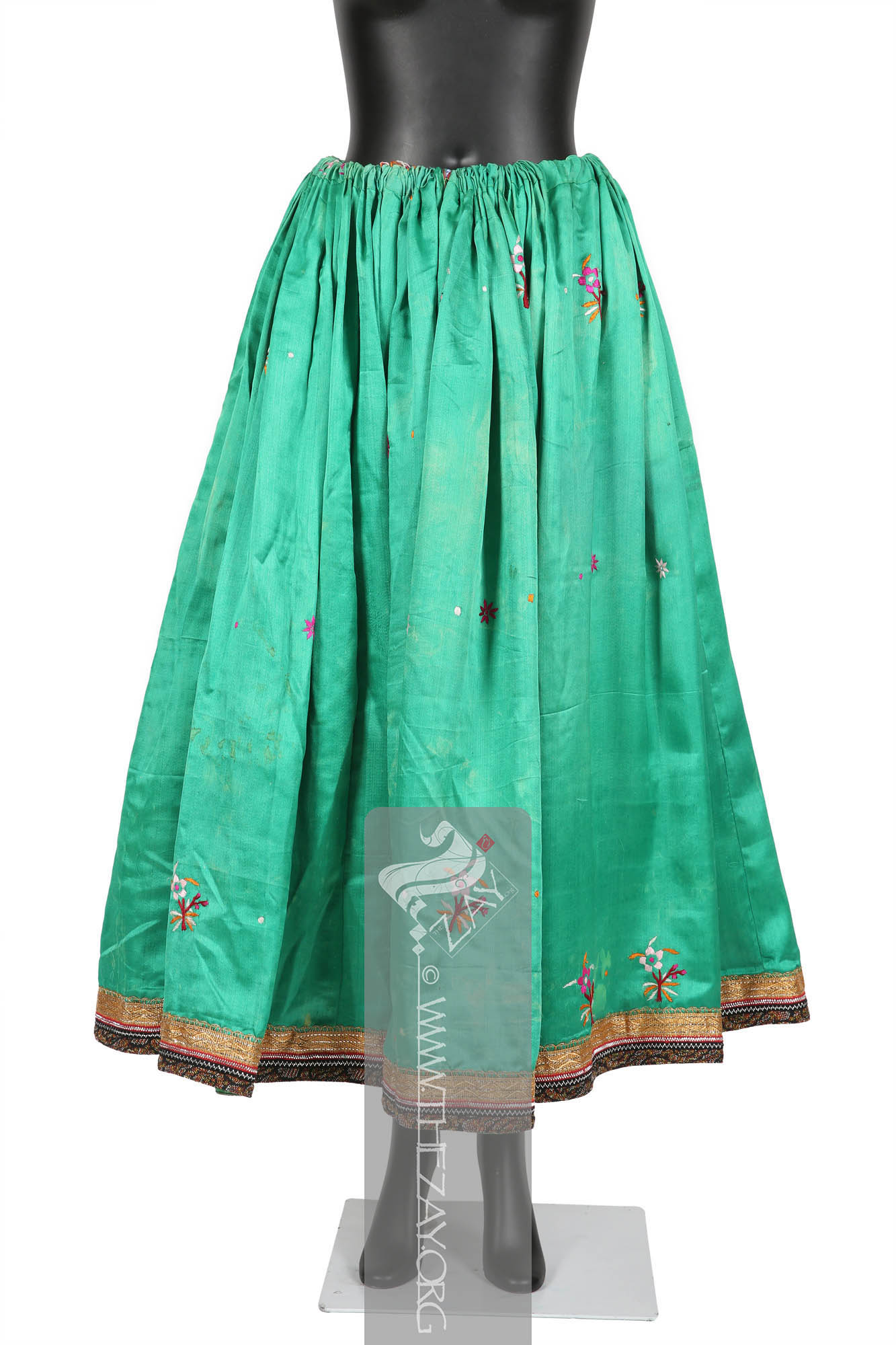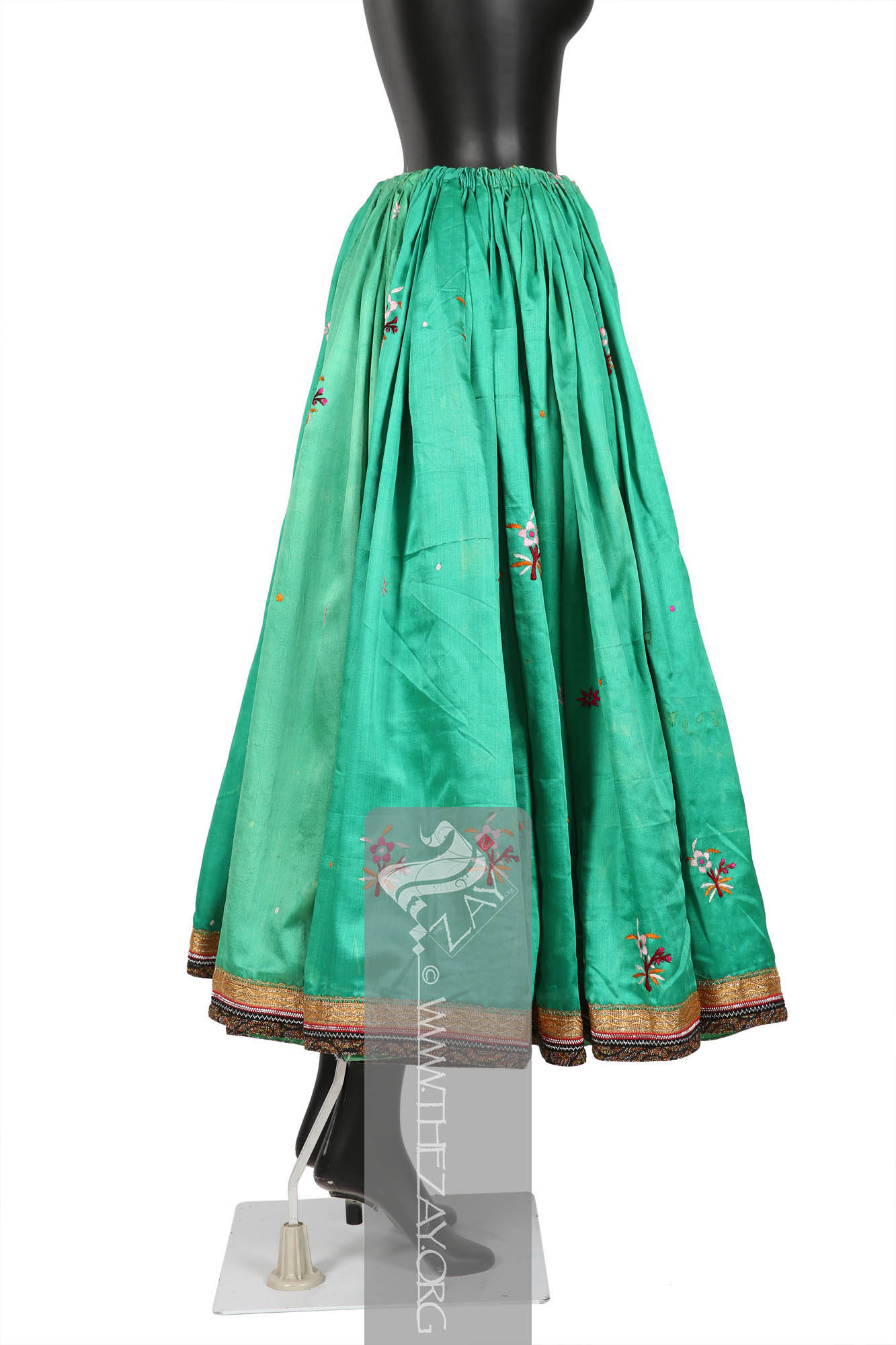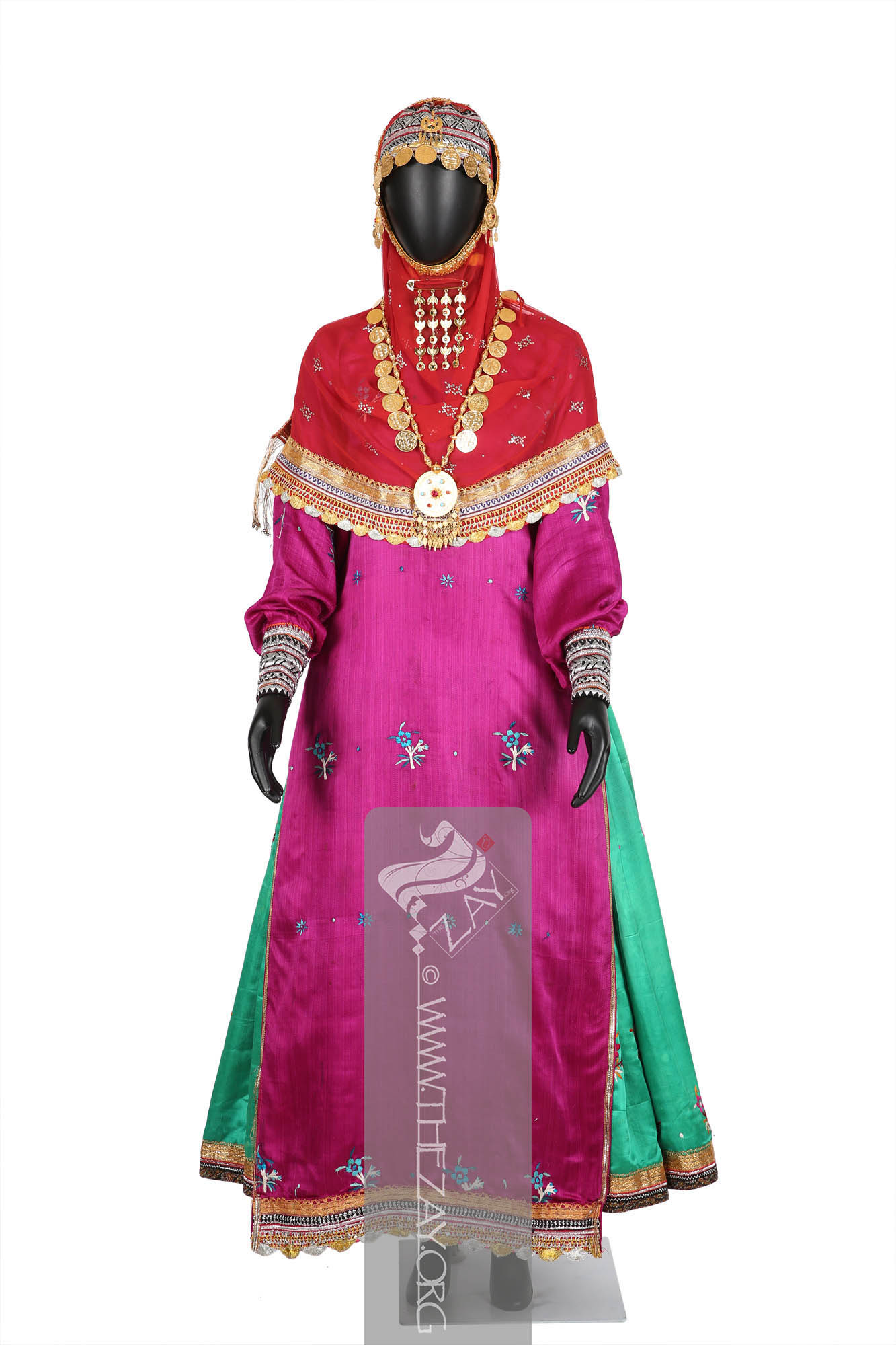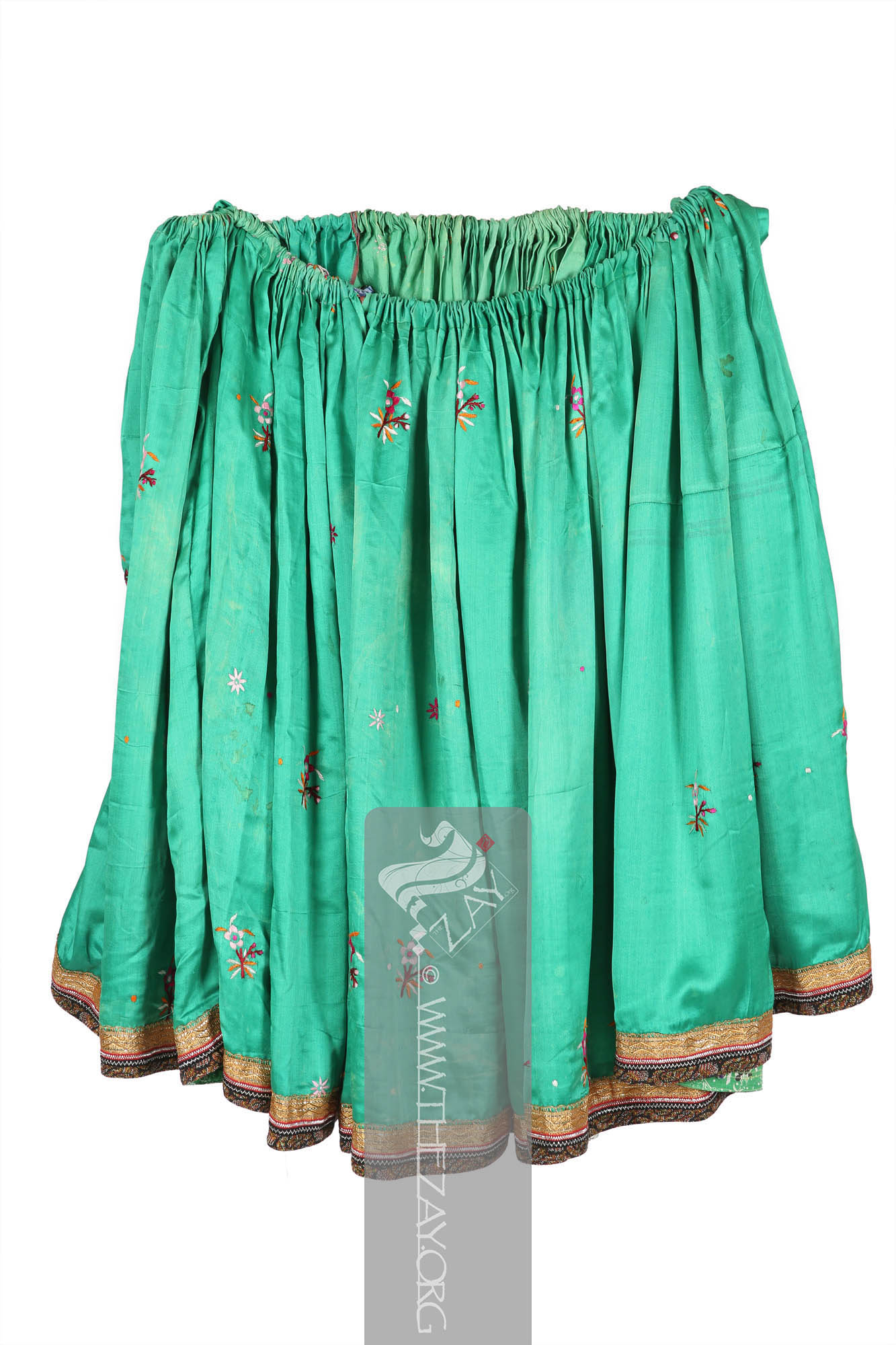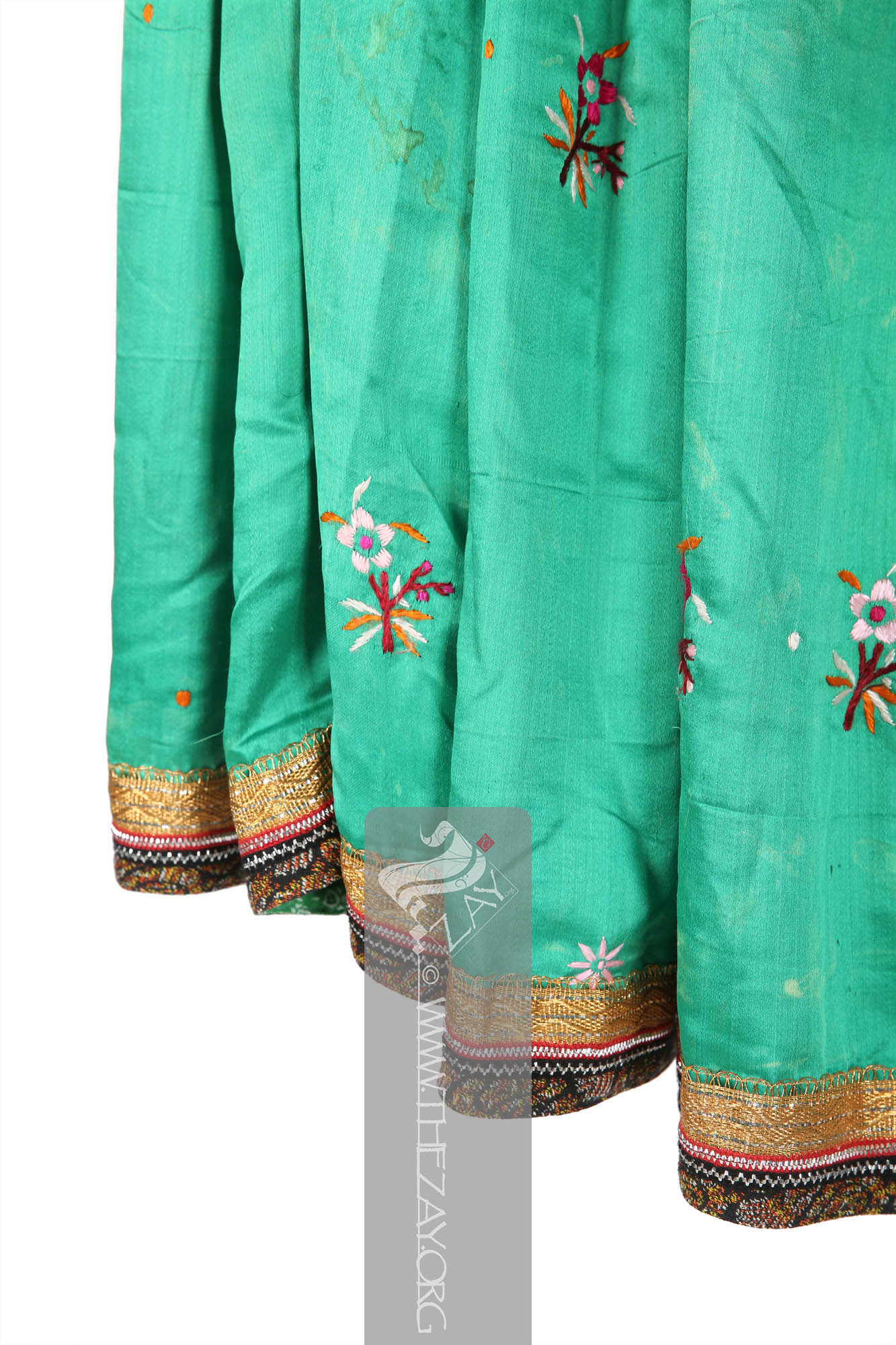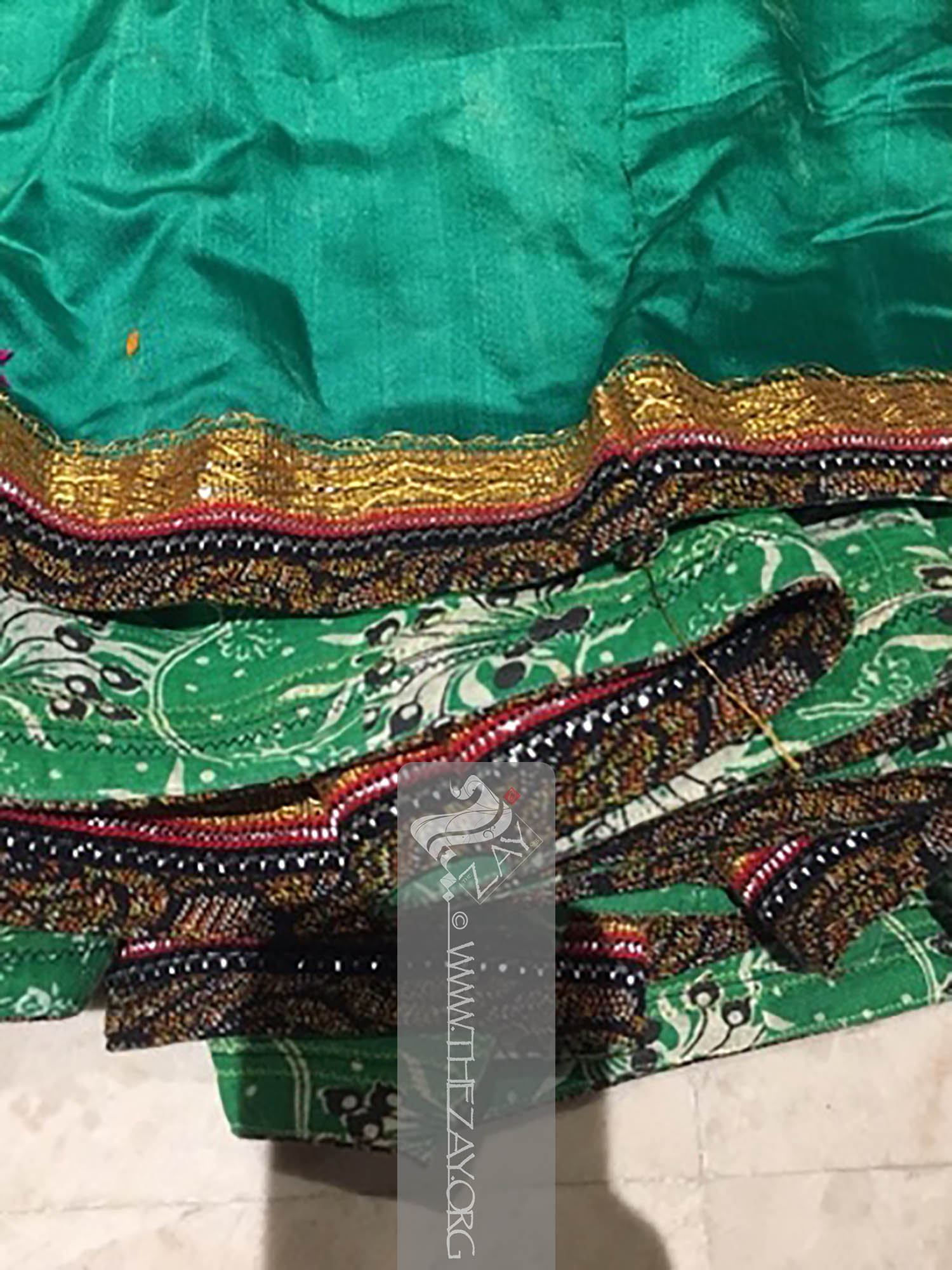Object NotePart of a lot with an ensemble consisting of two more parts (
ZI2018.500737 ASIA and
ZI2018.500737b ASIA) and a cloak (ZI2018.500738 ASIA).
Object HistoryThis object was sourced with the help of fashion designer Homeira Ebadi from the Fishvar city of Larestan county of Fars Province in southwest Iran. It was purchased by her on behalf of
Dr. Reem Tariq
Ṭariq: (Arabic; Synonym: tulle_bi_talli
Tūlle_bi_tallī: (French: Tulle – a city in France where fine material for veil was first made; Turkish: tel – wire; Synonym: tariq; talli; badla; khus_dozi ), series of small metal knots made on a woven net ground as embellishment. The term is commonly used in the North African Arab region specifically in Egypt.
; talli; badla; khus_dozi ), series of small metal knots made on a woven net ground as embellishment. The term is commonly used in the Levant Arab region specifically in Lebanon.
El Mutwalli
Dr. Reem Tariq
Ṭariq: (Arabic; Synonym: tulle_bi_talli
Tūlle_bi_tallī: (French: Tulle – a city in France where fine material for veil was first made; Turkish: tel – wire; Synonym: tariq; talli; badla; khus_dozi ), series of small metal knots made on a woven net ground as embellishment. The term is commonly used in the North African Arab region specifically in Egypt.
; talli; badla; khus_dozi ), series of small metal knots made on a woven net ground as embellishment. The term is commonly used in the Levant Arab region specifically in Lebanon.
el Mutwallī: Founder (CEO) of the Zay
Zay: (Arabic: costume, Pl. azyaā’), a set of clothes in a style typical of a particular country or historical period. Initiative, a public figure, speaker and author. An expert curator and consultant in Islamic art and architecture, interior design, historic costume, and UAE heritage. in 2018 to be added to The
Zay
Zay: (Arabic: costume, Pl. azyaā’), a set of clothes in a style typical of a particular country or historical period. initiative collection.
Apart from being a fashion designer Ms. Ebadi is a dedicated volunteer associated with The
Zay
Zay: (Arabic: costume, Pl. azyaā’), a set of clothes in a style typical of a particular country or historical period. Initiative and its cause, often lending a hand in sourcing unique pieces like this.
Our heartfelt gratitude to Ms. Ebadi for her efforts for her contribution.
Object Features This is a green silk full skirt possibly known as (
tombun_zanuna
Tombūn-zanūna: (Persian: zanu/zanoo – knee; Synonym: Tonban
Tonbān: (Persian, Synonym: tombun_zanuna, Salita), traditional long skirts usually of satin silk worn by Turkic speaking Qashqai women of Iran. , Salita), traditional long skirts usually of satin silk worn by Lori speaking ethnic women of Iran. ) of (
satin
Sātin: (Arabic: Zaytuni: from Chinese port of Zayton in Quanzhou province where it was exported from and acquired by Arab merchants), one of the three basic types of woven fabric with a glossy top surface and a dull back. Originated in China and was fundamentally woven in silk.) weave with sporadic repeats of floral motifs. Usually worn with a fairly straight-fitted full tunic dress (pirhan) with long slits on the sides or a shorter collarless shirt of
satin
Sātin: (Arabic: Zaytuni: from Chinese port of Zayton in Quanzhou province where it was exported from and acquired by Arab merchants), one of the three basic types of woven fabric with a glossy top surface and a dull back. Originated in China and was fundamentally woven in silk. brocade
Brocade: (Italian: brocco – twisted thread), is a richly decorative fabric woven with an intricate raised pattern. Its origins can be traced back to ancient China, where it was made for the imperial court. It later spread to Europe during the Renaissance and became popular in couture and decorative arts. (
jama_atlas
Jama_atlas: (Hindustani: jama – A robe; Atlas – silk obtained from the Atlas worm; Synonym: Juma_atlas
Juma_atlas: (Hindustani: Juma – A robe; Atlas – silk obtained from the Atlas worm; Synonym: Jama_atlas), a collarless shirt of silk brocade fabric worn during ceremonial occasions like weddings by women of the Lori speaking ethnic community in south and southwest of Iran. ), a collarless shirt of silk brocade fabric worn during ceremonial occasions like weddings by women of the Lori speaking ethnic community in south and southwest of Iran. /
juma_atlas
Juma_atlas: (Hindustani: Juma – A robe; Atlas – silk obtained from the Atlas worm; Synonym: Jama_atlas), a collarless shirt of silk brocade fabric worn during ceremonial occasions like weddings by women of the Lori speaking ethnic community in south and southwest of Iran. ) for ceremonial purposes and a pair of underdrawers (
zirsawlar
) by Lori speaking ethnic women of Iran including the women of the Lor, Bakhtiari, and Boir-Ahmadi tribes.
Although this ensemble has a very close resemblance to the wedding ensemble (
ZI2018.500121 ASIA;
ZI2018.500121a ASIA and
ZI2018.500121b ASIA) from Evaz – also in Fars province, Iran rife with Lori-speaking tribes –it is worth noting that this ensemble is a traditional garment for regular wear. While the northern Lori women would be seen wearing a
scarf
Scarf: (English), usually a rectangular piece of cloth loosely worn over the shoulders, upper body and arms, and sometimes also over the head. (
tara_awwal
Tarā_awwal: (Arabic: awwal – first); a scarf traditionally worn by the Lori speaking ethnic women before wrapping their traditional turban – tara. ) and a turban (
tara
Tarā: A kind of turban traditionally worn by Lori speaking ethnic women over their scarves. ) over their heads, the Bakhtiari and Boir-Ahmadi women of the south often drape their heads with a hood (
lačak
) and fine veil (
meyna
Meynā: (Synonym: rusari
Rūsarī: (Synonym: meyna, Qashqai – lačak), a pan Iranian term for headscarves or veils worn by women in Iran. It is also used sometimes to loosely refer a chador or hijab too. , Qashqai – lačak, čarqad), a kind of head scarf
Scarf: (English), usually a rectangular piece of cloth loosely worn over the shoulders, upper body and arms, and sometimes also over the head. or veil worn by Bakhtiari and Boir-Ahmadi women of the Lori speaking ethnicity in Iran. It is draped over the head and pinned under the chin without covering their faces. ) over it.
The field of the skirt is embellished with sporadic repeats of a floral arrangement that looks like a bird in flight and is a popular motif on garments across the Gulf on the Arabian Peninsula, where the motif is called (
bu_tayrah
Bū_ṭayrah: (Arabic, bū: diminutive of abū: father, ṭayr: bird). The term is used in the UAE to refer to a Chinese silk fabric, embroidered in floral motifs resembling birds in flight. It’s a sheer light format used for overgarments (athwāb), while the opaque satin
Sātin: (Arabic: Zaytuni: from Chinese port of Zayton in Quanzhou province where it was exported from and acquired by Arab merchants), one of the three basic types of woven fabric with a glossy top surface and a dull back. Originated in China and was fundamentally woven in silk. silk is used for tunics (kanādīr) and the lower more visible parts of underpants (sarāwīl).) in colloquial UAE dialect. This arrangement is embroidered using (
satin_stitch
Satin_stitch: (Synonym: Damask Stitch), is a type of flat embroidery stitch that creates a satin like smooth and shiny surface by closely spaced stitches, covering an entire area or shape.) style in ivory, fuchsia, and pale pink, brown, and yellow silk
floss
Floss: (Old French: flosche – nap of velvet), is a type of silk fibre obtained from the cocoons of wild silkworms. It is characterized by its long, fluffy fibers that are not tightly woven, making it ideal for use in various textile applications such as embroidery, lace-making, and sewing. threads. The waistline is gathered and fastened with a drawstring.
The hemline has woven cotton edging with a wave pattern in white, orange, and yellow on a black background. This is followed by two strips of metal foil embroidery (
badlah
Bādlah: (Hindustani: badal – cloud from Sanskirt: vārdala – water; Synonym: tariq; talli
Tallī: (Turkish: tel – wire, string), Gulf Arab – a woven braided trimming made with metal wire, threads and ribbons often sewn on detachable panels used as embellishments. Other – (Synonym: tulle_bi_talli
Tūlle_bi_tallī: (French: Tulle – a city in France where fine material for veil was first made; Turkish: tel – wire; Synonym: tariq; talli; badla; khus_dozi ), series of small metal knots made on a woven net ground as embellishment. The term is commonly used in the North African Arab region specifically in Egypt.
; tariq; badla; khus_dozi), series of small metal knots made on a woven net ground as embellishment.
; tulle_bi_talli
Tūlle_bi_tallī: (French: Tulle – a city in France where fine material for veil was first made; Turkish: tel – wire; Synonym: tariq; talli; badla; khus_dozi ), series of small metal knots made on a woven net ground as embellishment. The term is commonly used in the North African Arab region specifically in Egypt.
; khus_dozi
Khus_dozi: (Persian: Khvosh – an Iranian province; dozi – needlework; Synonym: tariq; talli
Tallī: (Turkish: tel – wire, string), Gulf Arab – a woven braided trimming made with metal wire, threads and ribbons often sewn on detachable panels used as embellishments. Other – (Synonym: tulle_bi_talli
Tūlle_bi_tallī: (French: Tulle – a city in France where fine material for veil was first made; Turkish: tel – wire; Synonym: tariq; talli; badla; khus_dozi ), series of small metal knots made on a woven net ground as embellishment. The term is commonly used in the North African Arab region specifically in Egypt.
; tariq; badla; khus_dozi), series of small metal knots made on a woven net ground as embellishment.
; tulle_bi_talli
Tūlle_bi_tallī: (French: Tulle – a city in France where fine material for veil was first made; Turkish: tel – wire; Synonym: tariq; talli; badla; khus_dozi ), series of small metal knots made on a woven net ground as embellishment. The term is commonly used in the North African Arab region specifically in Egypt.
; badla), series of small metal knots made on a woven net ground as embellishment. The term is commonly used in Iran and parts of the Arabian Peninsula possibly because Khvosh was one of the centres for the craft.
), series of small metal knots made on a woven net ground as embellishment. The term is commonly used in India and parts of the subcontinent.
) on a black and red background which is further followed by a broad crocheted ribbon made of metallic golden thread (
zari
Zarī: (Persian two-syllables: zar: gold & dozi: embellishment), complex embroidery technique that uses metal alloy on silk, satin, or velvet, and may include pearls, beads, and precious stones. Colloquially in the Arab gulf region, the term (zarī) is loosely applied to any gilded thread, embellishment or gilded brocade fabric. Originated in ancient Persia it has been used extensively in Indian and Middle Eastern textiles for centuries. ). Only the hemline of the piece is lined with a thin
gauze
Gauze: (English), very fine wire mesh transparent fabric of silk, linen, or cotton. fabric printed with floral motifs in black and white on a green base.
Qashqai women from the Zagros mountainous regions of Iran are also often seen wearing similar traditional dresses with a few variations in their style as well as names. This is because until c. 1920s the Qashqai traditional wears were heavily influenced and were almost similar to the population of southwest Iran - Fars, Kohgiluyeh and Boyer-Ahmad, west Hormozgan, etc. However, they call such skirts (
tonban
Tonbān: (Persian, Synonym: tombun_zanuna, Salita), traditional long skirts usually of satin silk worn by Turkic speaking Qashqai women of Iran. ) or (
salita
Salīta: (Persian, Synonym: tombun_zanuna, Tonban), traditional long skirts usually of satin
Sātin: (Arabic: Zaytuni: from Chinese port of Zayton in Quanzhou province where it was exported from and acquired by Arab merchants), one of the three basic types of woven fabric with a glossy top surface and a dull back. Originated in China and was fundamentally woven in silk. silk worn by Turkic-speaking Qashqai women of Iran. ).
Links 



